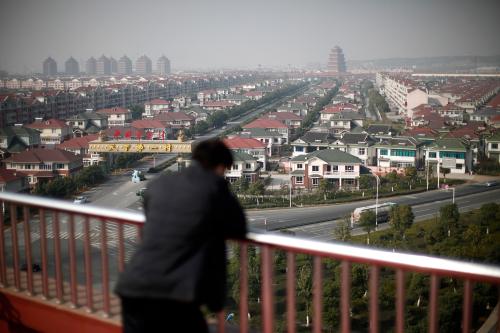This article is based on the Asian Development Bank Economics Working Paper No.517 “The Landscape of Economic Growth: Do Middle-Income Countries Differ?,” August 2017.
Slowing growth in emerging markets during the post-global financial crisis period is giving fresh impetus to the so-called “middle-income trap” debate.
The debate centers on a well-known stylized fact. Many countries made the jump from low income to middle income, but only a handful were able to make the final jump from middle income to high income. A number of structural factors, such as the shift from input-led growth to productivity- and innovation-led growth, make the middle-to-high transition more challenging. The idea of a middle-income trap resonates especially in Latin America, where many countries have been trapped at middle income for a long time.
Figure 1. Years as middle income, 1960-2014, selected Latin American countries
 Note: Numbers beside the horizontal bars are the years as middle income between 1960 and 2014. Highlighted in green font are those who have reached high income based on the income classification using purchasing power parity in constant 2011 dollars from Penn World Tables 9.0.
Note: Numbers beside the horizontal bars are the years as middle income between 1960 and 2014. Highlighted in green font are those who have reached high income based on the income classification using purchasing power parity in constant 2011 dollars from Penn World Tables 9.0.
Source: Estrada et al. (forthcoming).
Of particular interest is China. A tangible decline in the growth rate in the post-crisis period (Figure 2), after decades of world-topping growth that turned the country into the world’s second-largest economy, is triggering widespread concerns about the middle-income trap. The burning question for China, which is now comfortably middle income, is whether it will follow in the footsteps of Brazil or, more hopefully, in the footsteps of South Korea.
Figure 2. Real GDP growth rate, China, 2005-2016
 Source: Asian Development Outlook (ADO) database
Source: Asian Development Outlook (ADO) database
The literature on the middle-income trap is fundamentally on economic growth in middle-income countries. The empirical evidence on the existence of a middle-income trap—i.e., economic growth slows down at middle income—is mixed. In any case, the existence or non-existence of a middle-income trap is an abstract issue for developing countries. What matters for them is to identify the factors that drive growth at middle income. But much, albeit not all, of that literature leans heavily on anecdotal—that is to say, country- and episode-specific—evidence. The literature uses a limited number of factors or variables to employ a confusing array of different definitions of what constitutes a middle-income country.
It is fair to say that this literature and the associated policy debate could both use some empirical facts. Thus, in a new working paper, titled The Landscape of Economic Growth: Do Middle-Income Countries Differ?, we have sought to impose some structure on this analytical chaos. Using standard definition of middle-income countries, we considered a wide range of factors or definitions designed to encompass the key variables considered in the preceding literature. We looked at not only the significant determinants of the growth of gross domestic product GDP, but also its growth accounting components, namely capital stock, labor hours, and total factor productivity (TFP).
Our basic finding is that the economic factors associated with per capita income growth do in fact differ across countries in different income classes and between middle-income and other countries in particular. The critical distinction is between low- and middle-income countries, insofar as how the prospects for growth, and its determinants, change as formerly poor countries experiencing sustained growth graduate to middle-income status. The lending-to-deposit interest rate spread is negatively related to the growth rate in low-income countries. The male to female gender ratio and share of working age population are positively associated with growth in low-income countries, confirming the importance of the demographic dividend.
In contrast, among middle-income countries, the lending-deposit rate spread no longer matters as consistently. This measure of the under-development of the financial system binds even less frequently and operates less powerfully on growth among high-income countries. The results suggest that inefficiencies in the financial system matter less, relative to other factors, as countries move up the income scale.
Similarly, the gender ratio is no longer as important while moving up, although the share of working age population continues to matter, suggesting the diminishing importance of demographic determinants with graduation to middle-income status. At this point, other variables gain a growing role. These include whether the country experiences a banking or currency crisis, the extent of capital inflows excluding foreign direct investment, and government debt as a share of GDP, all of which affect growth negatively.
Distilling overall growth into its proximate growth-accounting components, we find that countries that successfully graduate from middle- to high-income status maintain higher investment rates and enjoy higher TFP growth rates. One interpretation is that demographic structure and banking sector development are key to growth in low-income countries, but macroeconomic and financial policies—which shape investment, dependence on portfolio capital inflows, the debt burden, and vulnerability to banking and financial crises—become increasingly important with graduation to middle-income status. And when it comes to the movement from middle- to high-income status, the always-elusive determinants of TFP growth emerge as a critical factor.









Commentary
Is economic growth in middle-income countries different from low-income countries?
September 25, 2017